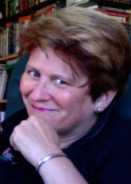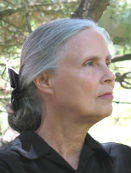Interview on How to Write a Memoir - Part 6
This is Part 6 of our conversation about how to write a memoir with Matilda Butler and Kendra Bonnett. Click here to return to Part 1. For more advice on how to write a memoir, visit Matilda and Kendra's website,WomensMemoirs.com.
In this part of our conversation, Matilda and Kendra talk about the keys to effective memoir writing.
A Conversation with Kendra Bonnett and Matilda Butler: Techniques for Writing Well
Creative Writing Now: Earlier, you mentioned that a memoir had to be good writing. Could you talk a bit more about what you mean by this and offer some tips on how to write a memoir well?

Kendra: We’ve got the perfect answer for this because we teach, we run coaching sessions, we critique, and we are hard on our people in terms of getting them to write well. I think what you are bringing up is very, very important because there are people who throughout their lives have written, and they just knew that someday they would write a book -- or they at least dreamed that someday they would write a book. But there are many other people who write memoirs who never dreamed they would write a book. They are not writers. They are not born writers. They are not even people who shape their life as writers. But they have a story to tell.
There is that old adage that everyone has one book in them. Well, for many people, that one book may be their memoir. They have a story to tell and they have to get it out. And that drives them more than the writing. These people, therefore, weren’t necessarily the best English students; didn’t spend a lifetime reading the great writers and learning from them and so, they have more of a challenge. It doesn’t mean they can’t do it.
So Matilda and I have gotten so involved in this whole process of writing that we have a new book that we have put together that is the product of workshops and classes that we have been teaching. It’s called Writing Alchemy. We came up with the five elements that we feel have to be in your writing to bring it up to the next level. Those are: character development, emotional depth, dialogue so that it isn’t just one long boring narrative, and adequate coverage of detail in time and place so that you really can understand -- you can see the place; you can understand the time. The last is the five senses. That’s where you get your really rich descriptions by helping the reader to see what you see, and smell what you smell, and taste what you taste, and you get tremendous depth. So that’s what we have focused on.

Matilda: Kendra’s right, and our book will be out in a couple of months. What we have developed around that is really a process for being able to incorporate those elements. That’s what we get into in the book. Those are the elements, and you can find advice from different writers on one or more of those. What we have done is to find a way where you can put them all together. In fact, that’s what our little “Writing in Five” videos are that we have on YouTube. We have two channels: we have a YouTube Woman’s Memoirs channel and we have a YouTube Writing Alchemy channel, and we are putting our videos into those. More and more of our videos are going into our Writing Alchemy channel, although there are a few on the other channel. What we do in those cases is: we are really just taking some of these wonderful writers and we’ll take a piece of advice from them. We are trying to give people little tips. But, even if you get deep into these books by writers or books about writing, you will find some of these. Obviously we did not think of some of these points, but the way in which one can work to incorporate them really does change the level of writing. And that’s part of what’s been our fun, and that’s part of what the alchemy of it is. We’ve had writers that now take our process and work with it and truly transform their writing. So, it’s been very exciting for us -- it’s magical.
Kendra: To take this now to a broader level, one thing I would say to anyone who wants to write memoir is read memoir. And I will assure you, you don’t have to read the best ones, because any you read, you are suddenly going to say, “Boy I don’t like that,” and “I don’t like the way that was done.” And, you know, you learn from that too. Suddenly you’ll say, “Boy, I never want to write it like that because I got lost. It was confusing. There wasn’t enough detail.” Whatever it is, if you find fault with something—that’s part of your learning process. Or if you pick up a wonderful one and you say, “Wow, this is really incredible,” then make yourself stop and say why do I say that? What is it that’s good about this? What works about this? What might I learn from this?
On our Women’s Memoirs website when we do book reviews, they’re really different than most book reviews, because we don’t really go a lot into the story; what we’re really saying is if you want to write memoir, what might you learn from this? You’ll pick up one memoir and it will be incredibly rich in sensory detail, and we’ll talk about that. In another one, maybe it’s really good at something like dialogue, or it lays out an interesting way of weaving the story together. So what we always say in memoir is what you can learn from it? What might you get out of it? So I would say for anyone, to start, pick up memoirs—you can go to the library and pick them up, you can buy them, anything you want to do. There are wonderful memoirs and sure, there are some that are said to be beautiful and literary and it is good to get into those. But if you have something that interests you or some aspect of your life you want to write about, you may want to see what other people have written along those lines. That may give you some ideas as to how to frame your own story.
But just read. Reading is very important.
Creative Writing Now: I enjoyed your YouTube video in which you made a distinction between “I” memoirs, and “Eye” memoirs. Could you talk a bit about this distinction, and how to write a memoir that has meaning beyond your personal experience?
Matilda: When you sit down to write a memoir, it’s about you. And you are thinking about “I”. As I say in the video, in the word “memoir” we have two words --“M-E,” me and the “I” for I --and it seems it is all about you. And when you start it, that is correct. That is where you need your head to be, because you’ve got to get inside yourself, and you need that time to write your story.
But then, as you begin to shape that story, and as you begin to think about presenting it to others, you really need this other eye, the “E-Y-E,” to have a perspective on it—to say how you are going to share that story with other people. And in a way, it’s sort of like when you look at another person eye-to-eye. At that point, you have already done the looking inside, and you need to then look out and be able to think about how you can connect to the other person. What is it that is more universal about what you are saying, because no one else will have had exactly what your experience is? So that’s certainly part of it.
In the next part of our conversation, Matilda Butler and Kendra Bonnett talk about the importance of revision and editing as part of the memoir writing process.
How to Write a Memoir - Next Steps
Go to Part 7 of our conversation with Matilda Butler and Kendra Bonnett about how to write a memoir.
Read advice on how to write a memoir from author Heather Sellers.
Check out our memoir writing competition.
See a list of all pages on how to write a memoir.
<< BACK from How to Write a Memoir to Creative Writing Now Home